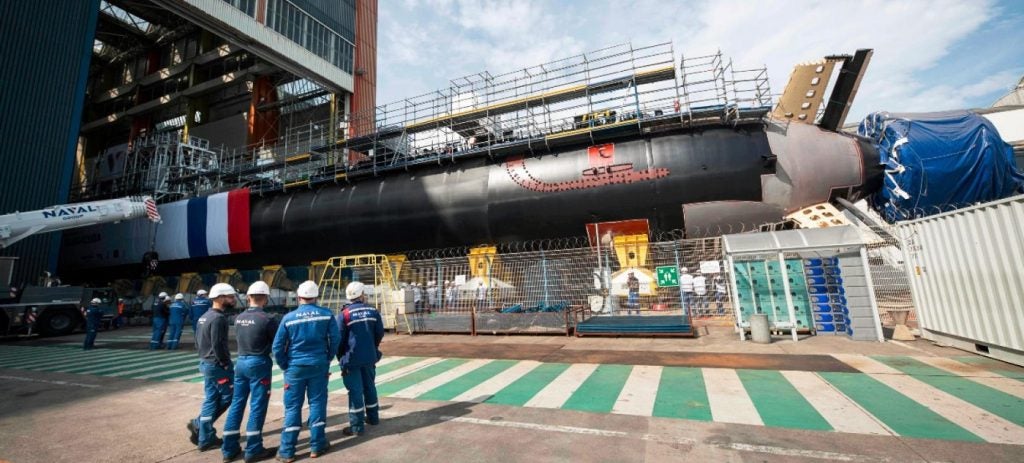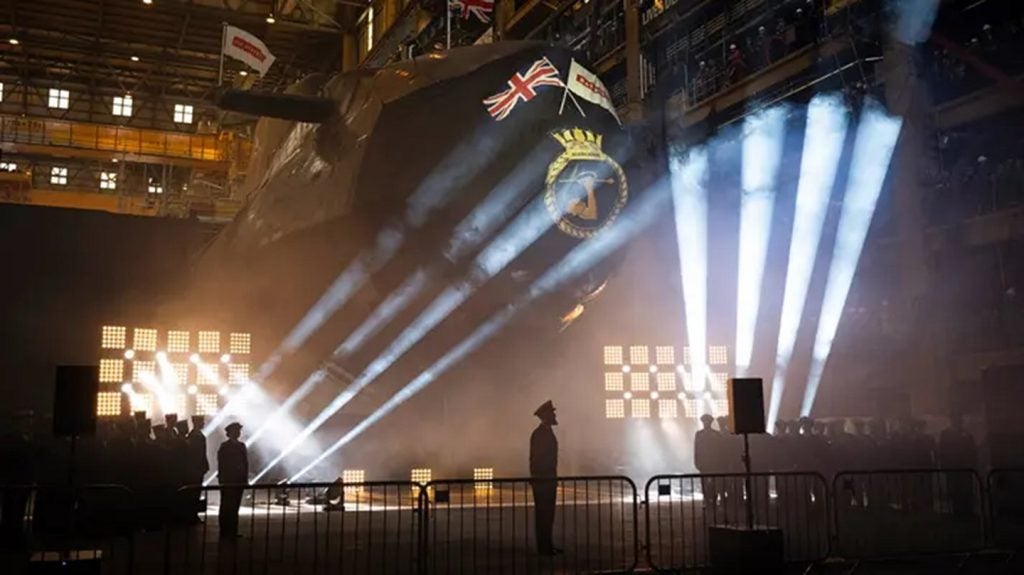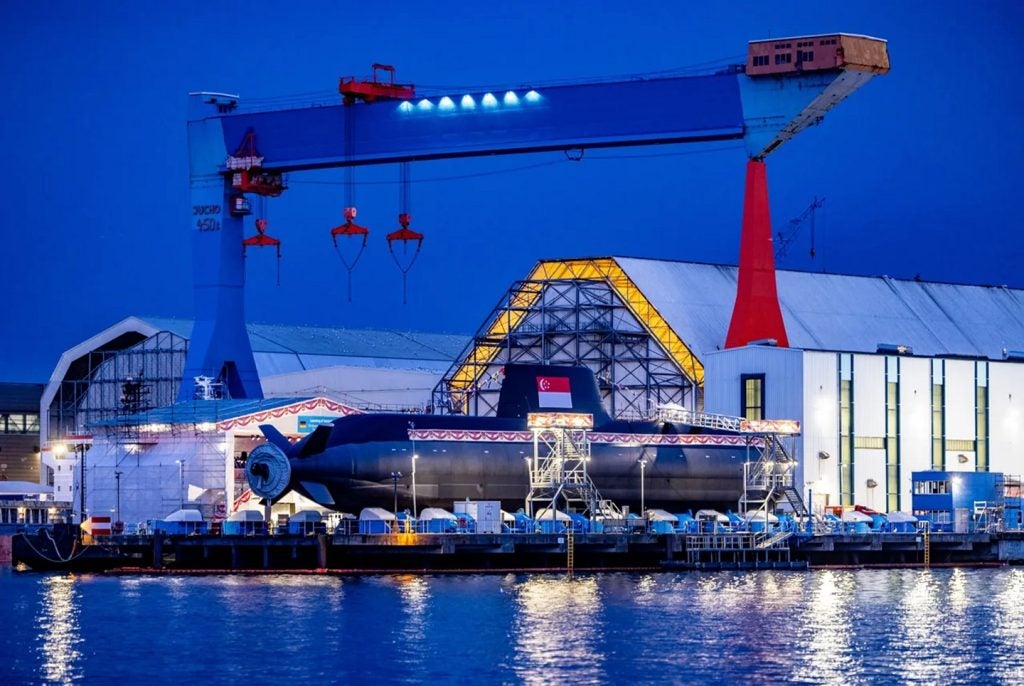
Shaped by previous disasters, economic concerns and universally accepted mandates such as the START II treaty, an increasing number of nations are equipping themselves with a submersible nuclear deterrent.
Having established itself as a leader in the nuclear submarine front, Russia is now making considerable progress in the development of its Borei-class fleet. The UK is also already concerned with the long-term sustainment of its Trident programme, issuing contracts for the construction of submarines not expected to enter service until 2028-2040.
Details of China’s nuclear submarine fleet, fuelled by rumour and inconsistent satellite imagery, remain uncertain, with several submarines reported to be under construction and in development. India has become the latest nation to equip itself with nuclear submarine capabilities with the development of the INS Arihant.
Arihant Class
India’s historic first nuclear-powered submarine, the indigenously developed INS Arihant, was commissioned in August 2016 at the Indian Navy’s dockyard in Visakhapatnam, home to India’s Eastern Naval Command.
How well do you really know your competitors?
Access the most comprehensive Company Profiles on the market, powered by GlobalData. Save hours of research. Gain competitive edge.

Thank you!
Your download email will arrive shortly
Not ready to buy yet? Download a free sample
We are confident about the unique quality of our Company Profiles. However, we want you to make the most beneficial decision for your business, so we offer a free sample that you can download by submitting the below form
By GlobalDataThe $2.9bn submarine was jointly developed by the Indian Navy, Bhabha Atomic Research Centre (BARC) and India’s Defence Research and Development Organisation (DRDO), with assistance from Russian designers.
Four submarines of the Arihant class are planned with the commissioning of vessels scheduled from 2016 to 2023. INS Arihant completed its first deterrent patrol in November 2018.
Astute Class
The service life of the UK Royal Navy’s Astute Class submarines, which are designed to replace the Swiftsure Class submarines launched between 1973 and 1977, began with the commissioning of HMS Astute in August 2010.
Of the seven Astute Class submarines ordered, three have been completed with four in various stages of construction. HMS Ambush was commissioned in March 2013 followed by HMS Artful in March 2016.
HMS Audacious, HMS Anson, HMS Agamemnon and HMS Agincourt are expected to enter service in 2019, 2020, 2022 and 2024, respectively.
Vanguard Class
Vanguard Class submarines became all-important for the UK Royal Navy following the decommissioning of RAF WE.177 free-fall nuclear bombs, as the vessels became the only remaining platform for the UK’s nuclear weapons.
The first of the Vanguard Class submarines, HMS Vanguard, was commissioned in 1993, followed by HMS Victorious in 1995, HMS Vigilant in 1996 and HMS Vengeance in 1999.
The vessels have undergone a long overhaul period and refuel refit conducted by Babcock, with HMS Vengeance becoming the last Vanguard Class submarine to enter the programme following HMS Vigilant’s completion in 2012.
Ohio Class
Commissioned between 1981 and 1997, the US Navy possesses 18 Ohio Class submarines split between the nation’s Pacific and Atlantic fleets. Four of the 18 submarines have since become nuclear-powered, conventionally armed submarines following the Strategic Arms Reduction Treaty.
The treaty capped the number of strategic missile submarines at 14, after which Electric Boat was contracted to complete the conversion of USS Ohio, USS Michigan, USS Florida and USS Georgia.
As part of the conversion, the submarines have been refitted with up to 154 Tomahawk TLAM or Tactical Tomahawk missiles and are capable of conducting special operations missions.
Virginia Class Attack Submarine
Designed to be a less expensive alternative to the Cold War-era Seawolf Class attack submarines, the Virginia Class submarines have been in service with the US Navy since 2004. Of the 38 that are planned to enter service, 17 are currently active with a further 11 under construction.
The US Navy opted to install several commercial-off-the-shelf components aboard the Virginia Class submarines, which, coupled with improvements in manufacturing technologies, resulted in savings of approximately $1.8bn per submarine over the expensive Seawolf Class vessels.
Further cost savings have been found by constructing the vessels in four sections rather than ten, saving approximately $300m a vessel. The overall cost per submarine has subsequently dropped to $2bn a boat.
Borei Class
Russia’s first new-generation Borei Class submarine, the Yury Dolgoruky, is the first submarine launched by the country since the fall of the Soviet Union. It is currently deployed in the Northern Fleet of the Russian Navy.
The fourth-generation vessels have been in development since 1996 and are intended to replace the Delta III and Typhoon Class submarines. Just three Borei-Class submarines have so far been commissioned, with the fourth submarine to join the Russian Navy in the second half of 2019.
Four more submarines, namely the Knyaz Oleg, Generalissimus Suvorov, Imperator Aleksandr III and the Knyaz Pozharskiy, are currently under construction, with a further two vessels planned.
Barracuda Class
France’s fleet of six Barracuda Class submarines has been designed to replace the nation’s four Rubis submarines and two Amethyst Class submarines, with the fleet considered a key element of the Force Océanique Stratégique Navy Command.
The Barracuda development programme was initiated by the French Defence Procurement Agency (DGA) in 1998. The Naval Group is constructing the submarines at a unit cost of approximately €1.5bn ($1.7bn). Three of the six planned vessels are currently under construction.
The first submarine in class, Suffren, is expected to be commissioned in 2020, while the remaining vessels are scheduled to be delivered until 2030. The entire cost of the Barracuda programme is estimated at €9bn ($10.1bn).


.gif)





